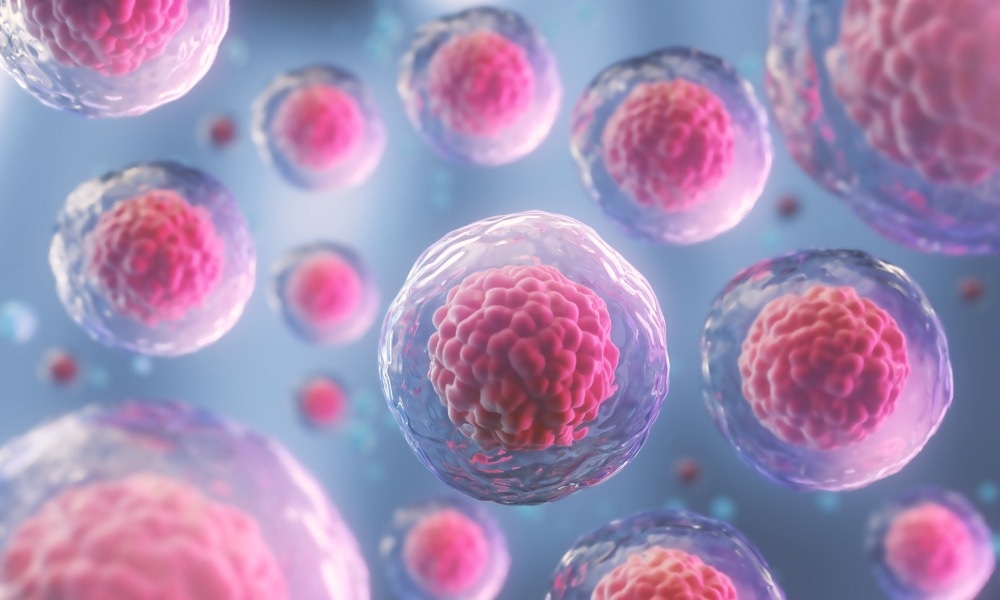Reviewed by Danielle Ellis, B.Sc.Apr 10 2023
A startling discovery that challenges the conventional wisdom that the majority of the hereditary information for cell differentiation is encoded within DNA and other genetic factors has been made regarding how specific proteins within the chromosomes of roundworms facilitate their offspring to develop specialized cells generations later.
 Representative differential interference contrast image micrographs of the CRISPR-tagged histones under study. The dashed lines outline the gonads. Image Credit: Ryan J. Gleason/Johns Hopkins University
Representative differential interference contrast image micrographs of the CRISPR-tagged histones under study. The dashed lines outline the gonads. Image Credit: Ryan J. Gleason/Johns Hopkins University
A study from Johns Hopkins University describes for the first time the methods by which a protein called histone H3 regulates when and how worm embryos create both highly specialized cells and pluripotent cells, which have the ability to switch certain genes on and off to make diverse types of body tissue. The specifics were published in Science Advances on April 7th, 2023.

Image Credit: Anusorn Nakdee/Shutterstock.com
The new study could clarify how these proteins’ related mutations affect different diseases. For instance, histone H3 is strongly linked to several cancers in children and young adults.
These mutations are highly prevalent in different cancers, so understanding their normal role in regulating cell fate and potentially differentiation of tissues may help us understand why some of them are more prevalent in certain diseases. The histones that we're looking at are some of the most mutated proteins in cancer and other diseases.”
Ryan J. Gleason, Study Lead Author and Postdoctoral Fellow, Johns Hopkins University
The chromosomes’ structural support within the nucleus of a cell, chromatin, is composed primarily of histones. While unicellular creatures teem with a virtually similar form of H3, histone H3 is particularly plentiful in multicellular species, such as plants and animals.
To solve the puzzle of why pluripotent cells are so adaptable in the early stages of development, scientists believe that the differences in H3 and its variant’s ratios offer important clues.
The team found that increasing H3 levels in the systems of C. elegans roundworm embryos restricted the potential or “plasticity” of their pluripotent cells as the worms grew and that they were able to extend the window of time for pluripotency that is normally lost in older embryos by altering the worm’s genome to lower the amount of H3.
Gleason added, “As cells differentiate, you start to get a hundredfold histone H3 being expressed at that time period, which coincides with that lineage-specific regulation. When you lower the amount of H3 during embryogenesis, we were able to change the normal path of development to adopt alternative paths of cell fate.”
Histones aid in turning on and off certain genes in pluripotent cells to commit to particular cell types, such as neurons, muscles, or other tissue. Genes serve as a voice that instructs cells on how to develop and is tightly controlled by histones. The fate of a cell depends on how loud or silent a gene is.
The team was able to trace the function the two histones played as the worm’s progeny matured with the gene-editing technique CRISPR. According to Gleasons, in the past ten years, CRISPR has made it significantly simpler for researchers to analyze how modifying genetic material affects the properties of animals, plants, and microbe traits.
Xin Chen, a Johns Hopkins biology professor, and co-investigator, stated that although the C. elegans roundworm provides finer insights into how these pluripotent cells evolve, more research is required to pinpoint how histones might also support embryogenesis in humans and animals made up of hundreds of different cell types.
Even though we are using this small worm to make these discoveries, really this finding should not be specific to one animal. It is hard to imagine the findings are only going to be applicable to one histone or one animal but, of course, more research needs to be done.”
Xin Chen, HHMI Investigator and Professor, Department of Biology, Johns Hopkins University
Source:
Journal reference:
Gleason, R. J., et al. (2023). Developmentally programmed histone H3 expression regulates cellular plasticity at the parental-to-early embryo transition. Science Advances. doi.org/10.1126/sciadv.adh0411